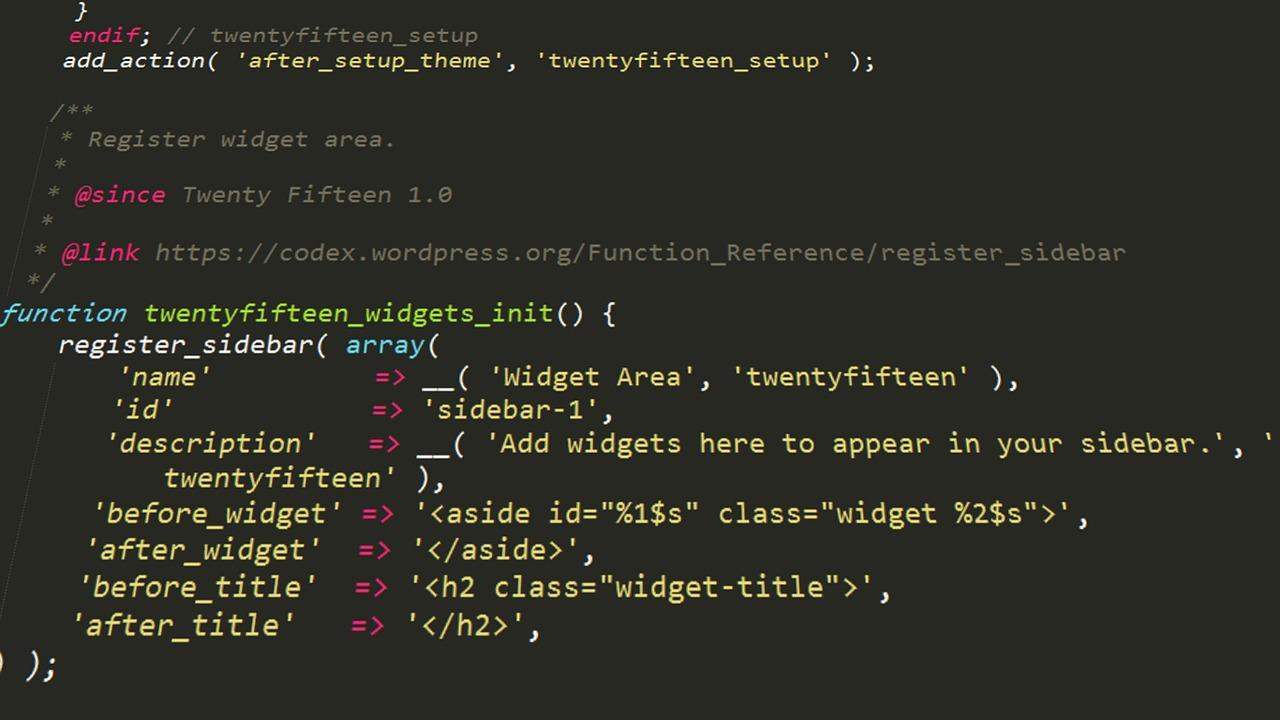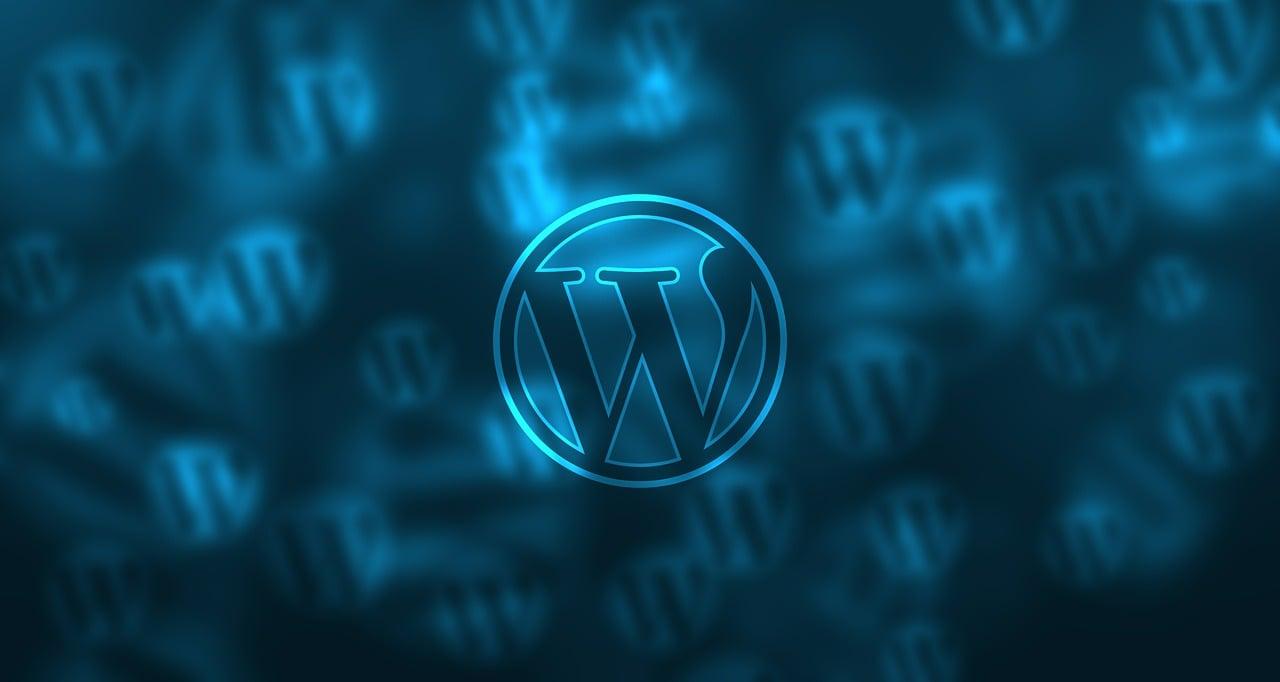Are you dreaming of starting your own website but feeling overwhelmed by teh technical jargon and complex processes? You’re not alone! The good news is that building a stunning WordPress website is more accessible than ever, and it doesn’t have to be a daunting task. Whether you’re looking to launch a blog, showcase your portfolio, or set up an online store, WordPress is the perfect platform to bring your vision to life. In this article, we’ll walk you through five easy steps to create your very own WordPress website. Trust us, with just a bit of guidance, you’ll be amazed at how quickly you can go from idea to online presence. so, roll up your sleeves and let’s dive in! Your digital journey starts here.
Getting Started with WordPress: Why Its a Great Choice for Your Website
when it comes to choosing a platform to build your website, wordpress stands out as a top contender. With its user-friendly interface and extensive customization options, it empowers both beginners and seasoned developers alike to create stunning and functional sites. Here’s why you should consider WordPress for your next project:
- Flexibility and Customization: WordPress offers thousands of themes and plugins, allowing you to tailor your site to your specific needs.Whether you’re creating a personal blog, a business website, or an online store, there’s a design and functionality option for you.
- SEO-Friendly: WordPress comes optimized for search engines right out of the box, plus you can enhance your SEO efforts with powerful plugins like Yoast SEO. This ensures that your website is easily discoverable by potential visitors.
- active Community Support: With a large community of users and developers, finding support and resources is easy. Whether you need help troubleshooting issues or want to learn how to enhance your site, countless forums and tutorials are at your fingertips.
- Scalability: As your website grows, wordpress can scale with you. Whether you’re adding new features or increasing traffic, WordPress can handle it all without sacrificing performance.
One of the best parts about wordpress is that you don’t need to be a coding expert to get started. The intuitive dashboard allows you to manage your content effortlessly. You can easily add new pages, posts, and media with just a few clicks. This ease of use means you can focus on creating great content rather than getting bogged down in technical details.
To illustrate just how adaptable wordpress is, here’s a quick comparison of some popular website types and relevant plugins that enhance their functionality:
| Website Type | Recommended Plugins |
|---|---|
| Blog | Jetpack, Akismet |
| Business | WPForms, Yoast SEO |
| eCommerce | WooCommerce, WP Super Cache |
| Portfolio | Envira Gallery, Elementor |
By selecting WordPress, you’re making a choice for a platform that not only meets your current needs but also grows with you over time. Whether you’re a small business owner, a creative professional, or just starting out in the online space, wordpress provides the tools you need to succeed.

Choosing the right domain Name: Tips for Making a Lasting Impression
Choosing the right domain name is crucial for your online presence. It’s the first impression your visitors will have of your website, and it can play a significant role in your brand identity. Here are some tips to help you select a memorable domain name that resonates with your audience.
First and foremost, keep it short and simple. A shorter domain name is easier to remember and type. Aim for a name that is concise and devoid of elaborate spellings. ideally,it should be no longer than 15 characters. This helps in avoiding potential typos that could lead to lost traffic.
Another critically important aspect is to choose a relevant domain extension. While .com is the most recognized and trusted domain extension, there are many others available, such as .net, .org, or niche-specific extensions like .design or .blog. Selecting the right extension can enhance your site’s credibility and indicate what your site is about.
Consider incorporating keywords related to your business or service in your domain name. This not only helps with search engine optimization (SEO) but also gives visitors an immediate understanding of your website’s purpose. Such as, if you run a bakery, a domain like “BestBakeryInTown.com” can be both descriptive and effective.
Remember to check for availability. Before getting too attached to a name, use domain registration sites to ensure it’s not already taken. If your ideal domain is unavailable, think about variations or synonyms that still convey your brand’s essence.
Lastly, think long-term. Your domain name should be somthing that can grow with your brand. Avoid trendy words or phrases that might not stand the test of time. A timeless name will ensure your brand remains relevant for years to come.
| Tip | Description |
|---|---|
| Keep It Short | avoid complex names; aim for under 15 characters. |
| Choose the Right Extension | Consider .com,.net, and niche-specific extensions. |
| Use Keywords | Incorporate relevant keywords for better SEO. |
| Check Availability | Ensure your chosen name is not already registered. |
| Think Long-Term | Select a name that can evolve with your brand. |
Selecting a Reliable Hosting Provider: What You Need to Know
When it comes to establishing your online presence, selecting the right hosting provider is paramount. Your choice can significantly impact your website’s performance, security, and user experience. here are a few key aspects to consider while making your selection:
- Performance and Uptime: Look for a provider that guarantees at least 99.9% uptime. Your website needs to be accessible to visitors at all times, and any downtime can lead to lost revenue and trust.
- Customer Support: Opt for a host that offers 24/7 customer support. Whether it’s a technical glitch or a simple question, you’ll want to ensure that help is just a call or chat away.
- Scalability: As your website grows, your hosting needs may change. Choose a provider that offers easy upgrade options so you can scale your resources without hassle.
- Security Features: A reliable host should provide built-in security features such as firewalls,SSL certificates,and regular backups to keep your data safe from threats.
- Pricing and Plans: Compare different hosting plans and ensure that the pricing is transparent. Look for any hidden fees and understand what is included in each package.
Additionally, you might want to consider the following features:
| Feature | Importance |
|---|---|
| Free Domain Name | Helps in branding and saves initial costs. |
| One-Click WordPress installation | Simplifies setup, allowing you to launch quickly. |
| Content Delivery Network (CDN) | Enhances load speed by distributing content globally. |
| Money-Back Guarantee | Offers peace of mind with a risk-free trial. |
Don’t forget to read reviews and testimonials from current users.This can provide valuable insights into the actual performance and reliability of the host you’re considering. Don’t just take their word for it; find out what others are saying about their experiences.
always ensure that the hosting plan you choose aligns with your specific needs. Whether you’re building a personal blog or a comprehensive e-commerce site, selecting the right hosting provider is a crucial first step towards online success.
Installing WordPress: A Simple Walkthrough to Get You Up and Running
Step 1: choose Your Hosting Provider
Choosing the right hosting provider is crucial for your WordPress website’s performance.Here are some popular options:
- bluehost – Ideal for beginners with 1-click WordPress installation.
- SiteGround – Great customer support and speed.
- WP engine – Managed hosting for larger sites.
Step 2: Register a Domain Name
Your domain name is your website’s address on the internet. It’s essential to choose a name that reflects your brand or purpose. Here are tips to consider:
- Keep it short and memorable.
- Avoid using special characters or numbers.
- Choose the right extension, like .com, .net, or others relevant to your niche.
Step 3: Install WordPress
Onc you have your hosting and domain set up, it’s time to install wordpress.Most hosting providers offer a simple 1-click installation. If not, you can manually install it by following these steps:
- Download the latest version of WordPress from WordPress.org.
- Upload it to your hosting account using an FTP client.
- Set up a database and user in your hosting control panel.
- Run the installation by accessing your domain.
Step 4: Choose Your Theme
Your website’s theme determines its look and feel. Here’s how to choose the right one:
- Browse the wordpress Theme Directory for free options.
- Consider premium themes from marketplaces like ThemeForest or Elegant Themes.
- Ensure the theme is responsive to look good on all devices.
step 5: Install Essential Plugins
Plugins enhance your WordPress site’s functionality. Here’s a quick table of must-have plugins:
| Plugin Name | Description |
|---|---|
| Yoast SEO | Optimizes your site for search engines. |
| WooCommerce | Transforms your site into an online store. |
| Wordfence | Enhances your site’s security. |
| Contact Form 7 | Creates customizable contact forms. |

Picking the Perfect Theme: How to Customize Your sites Look and Feel
Choosing the right theme for your WordPress website is more than just picking a design; it’s about creating an environment that resonates with your audience. A well-selected theme can enhance user experience, improve functionality, and elevate your brand’s image.Here are some key aspects to consider:
- Identify Your Purpose: Consider what your website aims to achieve.Is it a blog, an online store, or a portfolio? Your theme should align with your goals.
- Responsive Design: Ensure that your chosen theme is mobile-friendly. A significant portion of web traffic comes from mobile devices, so your site should look great on all screens.
- Customization Options: Look for themes that offer easy customization. You want a theme that allows you to tweak colors, fonts, and layouts without needing extensive coding knowledge.
Next, let’s dive into some specific features that can elevate your site’s style:
- Typography: Choose themes with clean and legible typography. The right font can significantly impact readability and overall aesthetics.
- Color Schemes: A cohesive color palette enhances your brand identity. Pick a theme that offers pre-defined color options or allows you to customize them easily.
- widgets and Layouts: Consider how your content will be displayed.A theme with various layout options and widget areas can provide flexibility as your site grows.
Don’t forget to check out user reviews and ratings to gauge the theme’s performance.Sometimes, the best way to assess a theme is by seeing how others have fared with it. Here’s a quick comparison table of popular themes:
| Theme Name | Best For | Customization Level | Mobile Friendly |
|---|---|---|---|
| Astra | Business & Blogs | high | Yes |
| Divi | Creative & Portfolio | Very High | Yes |
| OceanWP | E-commerce | Medium | Yes |
remember to preview your theme before making a decision.Most themes allow you to see how they’ll look with your content. Take advantage of this feature to ensure it aligns with your vision. By carefully considering these elements, you can effortlessly create a stunning and functional WordPress site that stands out in the crowded online space.
Essential Plugins for functionality: Boosting Your Site’s Performance
To truly maximize your WordPress site’s potential, integrating the right plugins can make all the difference. These essential tools not only enhance functionality but also significantly boost your site’s performance and user experience. Here are some must-have plugins that every WordPress website should consider:
- Yoast SEO: Optimize your content for search engines effortlessly with this user-friendly plugin. it provides real-time feedback on your posts, helping you improve your SEO strategy.
- WP Super Cache: Speed is key! This plugin generates static HTML files from your dynamic WordPress blog, resulting in faster load times and a better experience for your visitors.
- WooCommerce: If you’re looking to sell products or services, WooCommerce is the go-to solution. It transforms your site into a fully functional online store with a wide range of features.
- Wordfence Security: Protect your site from online threats. This comprehensive security plugin offers firewall protection, malware scanning, and login attempt monitoring.
- Elementor: Bring your pages to life without any coding knowledge. With its drag-and-drop functionality, Elementor allows you to design stunning layouts and customize your site effortlessly.
Incorporating these plugins not only enhances the capabilities of your site but also ensures a smoother experience for your users. Each of these plugins comes with unique features that cater to different needs,whether you’re focusing on SEO,speed,e-commerce,security,or design versatility.
| Plugin | Purpose | Key Feature |
|---|---|---|
| Yoast SEO | SEO Optimization | Real-time content analysis |
| WP Super Cache | Performance | Static HTML generation |
| WooCommerce | E-commerce | Full online store capabilities |
| Wordfence Security | Site Security | Firewall protection |
| Elementor | Page Design | Drag-and-drop editor |
When selecting plugins, always consider both your current needs and future goals. A well-chosen plugin can grow alongside your website, adapting as you expand your content or services.By carefully curating the plugins you install, you can streamline operations and refine the overall functionality of your site.

Creating Engaging Content: Best Practices for Captivating Your Audience
Creating a WordPress website doesn’t have to be a daunting task.In just a few easy steps, you can establish an online presence that not only looks great but also engages your audience. Here’s how you can turn your vision into reality.
Start by choosing a reliable hosting provider. This is crucial because your website’s performance and accessibility largely depend on the quality of your hosting service. Look for features like:
- High uptime guarantees
- Scalable plans for future growth
- Excellent customer support options
Next, install WordPress. Most hosting providers offer a one-click installation feature, making this step a breeze. Once WordPress is up and running, it’s time to select a theme that resonates with your brand. A good theme should not only be visually appealing but also responsive and customizable. Consider exploring both free and premium options, ensuring that they align with your target audience’s preferences.
Now, let’s talk about plugins. These are essential tools that expand your site’s functionality. Here are a few must-have plugins to consider:
- Yoast SEO for search engine optimization
- Contact Form 7 to manage user inquiries
- WooCommerce if you plan to sell products
After setting up your theme and plugins, focus on creating high-quality content. This is where you can truly engage your audience. Use clear headings,bullet points,and images to break up text and make your content more digestible. Here’s a simple structure you can follow:
| Content Element | Description |
|---|---|
| Introduction | Grab attention with a compelling hook. |
| Main Body | Provide valuable, informative content. |
| Conclusion | Summarize key points and include a call to action. |
don’t forget to promote your content! Share your posts on social media, engage with your audience in the comments, and consider using email marketing to keep your subscribers updated. these strategies will help build a loyal community around your website.

Setting Up Menus and Navigation: Making Your Website User-Friendly
Creating a user-friendly navigation structure is crucial for enhancing the overall experience of your website visitors. A well-organized menu not only helps users find what they’re looking for but also keeps them engaged. Here’s how you can set up your menus effectively in WordPress:
- Keep It simple: your menu should be straightforward. Limit the number of main menu items to avoid overwhelming your visitors.
- Prioritize Content: Place the most important pages—like Home,About,and Contact—at the forefront of your menu.
- Use descriptive Labels: Instead of vague terms like “Products”, use more specific labels like “Digital Marketing Services”. This clarity helps users understand what to expect.
wordpress allows you to create custom menus easily. To get started, go to Appearance > Menus in your WordPress dashboard. From there, you can:
- Add new menu items by selecting pages, posts, or custom links.
- Organize items by dragging and dropping them into your desired order.
- Create sub-menus by indenting items under a main menu entry, which can definitely help in categorizing content.
Consider implementing a responsive design for your menus, ensuring they look great on both desktop and mobile devices.WordPress themes frequently enough come with built-in mobile menu options, so make sure to utilize them for a sleek, user-friendly experience.
| Menu Item | Description |
|---|---|
| Home | Your website’s landing page. |
| About | Details about your business or yourself. |
| Services | A detailed list of what you offer. |
| Blog | Your latest articles and updates. |
| Contact | How visitors can get in touch. |
don’t underestimate the power of search functionality. Adding a search bar can significantly enhance user experience, allowing visitors to find specific content quickly. Most WordPress themes support this feature easily, so make sure it’s prominent yet unobtrusive.

Optimizing for SEO: Simple Strategies to Increase Your Visibility
Maximizing Your Online Presence
In the ever-evolving world of digital marketing, understanding how to enhance your visibility on search engines is crucial. Here are some straightforward strategies to ensure your WordPress website attracts the right audience:
- Keyword Research: Utilize tools like Google Keyword Planner or SEMrush to find relevant keywords that resonate with your target audience. Incorporate these keywords naturally into your content, headings, and meta descriptions.
- Optimized Content: create high-quality, engaging content that provides value to your audience. Aim for at least 300 words per post and use your main keywords strategically without overstuffing.
- Mobile Responsiveness: Ensure your website is mobile-friendly.A responsive design not only improves user experience but also boosts your SEO ranking on search engines.
- Internal Linking: use internal links to connect related posts and pages within your site. This keeps visitors engaged longer and helps search engines understand the structure of your website.
- Image Optimization: Optimize images by compressing them and adding alt text that includes relevant keywords.This helps improve load times and enhances accessibility for visually impaired users.
Simple Technical Enhancements
| Element | Optimization Tip |
|---|---|
| title Tags | Keep them under 60 characters and include your primary keyword. |
| Meta Descriptions | Write compelling descriptions under 155 characters to encourage click-throughs. |
| URL structure | Use simple, descriptive URLs with keywords to enhance clarity. |
| Site Speed | Utilize caching plugins and a CDN to improve loading times. |
By implementing these tactics, you’ll not only improve your website’s SEO but also create a more engaging and user-friendly experience for your visitors. Remember,consistency is key; regularly updating your content and staying informed on SEO trends can significantly impact your visibility.
Testing and Launching Your Site: Final touches Before Going Live
Before you hit that glorious “Publish” button, it’s essential to ensure that everything on your WordPress site is functioning perfectly. Testing isn’t just a checklist; it’s your chance to catch any last-minute issues that could affect user experience. Start by navigating through your site as a visitor would. Click on each link, view every page, and interact with all features. Here are some key areas to focus on:
- responsive Design: Ensure your site looks great on all devices—desktops, tablets, and smartphones.
- Page Load Speed: Use tools like Google PageSpeed Insights to check your site’s loading time and optimize images and scripts accordingly.
- Functionality: Test all forms, buttons, and interactive elements to ensure they work smoothly.
- SEO Basics: Verify that your SEO settings are intact; use plugins like Yoast SEO to guide you through the essentials.
After thorough testing, it’s time to tackle your final touches. One of the most rewarding aspects of launching a site is the design finesse that makes your website truly yours. Customize your header and footer, add a compelling logo, and make sure your color scheme reflects your brand’s personality. Don’t forget to optimize your favicon—the small icon that appears in browser tabs. It’s a minor detail that contributes to your site’s overall professionalism.
Next, consider conducting a final content audit. Ensure that all text is clear, free of typos, and conveys the right message. This is also the perfect moment to integrate calls-to-action (CTAs) strategically throughout your site. CTAs guide your visitors on what to do next, whether it’s signing up for a newsletter or checking out a product. Think about your audience and what actions you want them to take.
| Step | Action Item |
|---|---|
| 1 | Test all links and buttons |
| 2 | Check for mobile responsiveness |
| 3 | Optimize images and speed |
| 4 | Review SEO settings |
| 5 | Conduct a final content check |
Lastly, don’t forget about backup and security measures. Install a reliable backup plugin and set up security protocols to protect your site from potential threats.Your hard work deserves to be safeguarded. Once all of these elements are in place, you’ll be ready to launch with confidence, knowing you’ve done everything to create an engaging and secure experience for your visitors.

Maintaining Your WordPress Site: Keeping It Fresh and Secure
Keeping your WordPress site fresh and secure is essential for delivering a great user experience and ensuring that your content reaches your audience effectively. Here are some straightforward steps to help you maintain your website effortlessly:
- Regular Updates: Make it a habit to check for updates regularly. This includes your WordPress core, themes, and plugins. Outdated versions can make your site vulnerable to security threats.
- Backup Your Site: Always have a backup strategy in place. Use plugins like UpdraftPlus or BackupBuddy to automate backups so you can restore your site quickly in case of an emergency.
- Optimize Your Content: Fresh content is vital. Regularly review your posts and pages to ensure they are up-to-date. Consider adding new blog posts, refreshing old content, and updating images to keep your site engaging.
- Monitor Site Performance: Utilize tools like Google PageSpeed Insights or gtmetrix to evaluate your site’s performance. They can offer insights on how to speed up your site and improve the user experience.
- Implement Security Measures: Use security plugins like Wordfence or Sucuri to monitor your site for vulnerabilities. Set up a firewall and configure regular security scans to protect your data.
Additionally, consider the importance of staying informed about the latest trends in web design and functionality. This not only helps with user experience but also affects your site’s SEO ranking. You might want to:
- Engage with Your Audience: Use comments, social media, or forums to connect with your visitors. Encourage feedback and respond to comments to foster a community around your content.
- Audit Your Plugins: Periodically review the plugins you have installed. Remove any that are not essential. This helps improve site speed and security.
- Check for Broken Links: Regularly scan your site for broken links. Use tools like Broken link Checker to ensure that your readers can navigate your content without issues.
Common WordPress Maintenance Tasks
| Task | Frequency | Notes |
|---|---|---|
| WordPress core Updates | Every 1-2 weeks | Automate if possible |
| Plugin Updates | Weekly | Check for compatibility |
| Theme Updates | Monthly | Backup before updating |
| Backups | Daily or Weekly | Store in multiple locations |
| Security Scans | Monthly | Address any vulnerabilities immediately |
By following these practices, you’ll not only keep your WordPress site secure but also ensure that it remains an engaging platform for your visitors.Remember, a well-maintained website speaks volumes about your professionalism and dedication to your audience!
Exploring Additional Resources: Where to Find Help and Inspiration
building a WordPress website can be a thrilling journey, but sometimes you might find yourself in need of a little extra guidance or inspiration. Luckily, the WordPress community is vast and welcoming, offering numerous resources to help you along the way. Here are some fantastic places to find the support you need:
- WordPress.org Forums: A great starting point where you can ask questions and find answers from experienced users.
- Online Tutorials: Websites like WPBeginner and WPHub offer step-by-step guides that cover everything from basic setups to advanced features.
- youtube Channels: Visual learners can benefit from channels like wordpress and WPCrafter that provide video tutorials.
- Social Media Groups: Join Facebook groups or follow Twitter accounts dedicated to WordPress for tips, tricks, and community support.
Conferences and meetups are also amazing for networking and learning from experts. Events like WordCamp gather WordPress enthusiasts from around the globe, where you can attend workshops and hear from industry leaders. These gatherings foster a sense of community and can spark ideas that you might not have considered before.
Another excellent avenue for inspiration is WordPress Themes and Plugins Directories. Browsing through these directories can not only give you ideas for your design but also help you discover functionalities that can enhance your site. Here’s a quick look at some popular options:
| Theme/Plugin | Purpose | Where to Find |
|---|---|---|
| Elementor | Page Builder | elementor.com |
| Astra | Lightweight Theme | wpsastra.com |
| Yoast SEO | SEO Optimization | yoast.com |
| WooCommerce | E-commerce Solution | woocommerce.com |
Don’t forget about blogs and newsletters dedicated to WordPress! Subscribing to reputable blogs like WPExplorer can keep you updated on the latest trends,tips,and tools available. Also, newsletters from WordPress experts can deliver curated content directly to your inbox, ensuring you never miss out on valuable insights.
Ultimately, the key to success is leveraging these resources to build a website that not only meets your needs but also inspires creativity.Dive into these tools and communities, and you’ll find the support and inspiration to transform your vision into reality!
Frequently Asked Questions (FAQ)
Q&A: 5 Easy Steps to Build a WordPress Website
Q: Why should I choose WordPress for my website?
A: Great question! WordPress is incredibly user-friendly, even for beginners. It’s flexible, letting you create anything from a personal blog to a full-fledged business site. Plus, there’s a huge community and countless themes and plugins available, which means you can easily customize your site to fit your unique needs.
Q: What do I need to get started with building a WordPress website?
A: All you need is a domain name and a hosting plan! Think of your domain name as your website’s address on the internet, and hosting is where your website lives. Many hosting providers offer a simple one-click installation for WordPress, making the beginning of your journey a breeze!
Q: Can you walk me through the five easy steps?
A: Absolutely! Here’s a quick breakdown:
- Choose a Domain and Hosting: Pick a catchy domain name and a reliable hosting provider that fits your needs.
- Install WordPress: Most hosting services have a straightforward installation process. Just a click or two, and you’re in!
- Select a Theme: Browse through the thousands of free and premium themes available. Choose one that resonates with your vision and is responsive (mobile-friendly).
- customize Your Site: Use WordPress’ built-in customizer to tweak your site’s colors, fonts, and layout. You can also add essential plugins for extra functionality!
- Create Content: Start writing! Add pages like “About,” “Services,” or even a blog. Remember, quality content is key to attracting and retaining visitors.
Q: How long will it take me to build my website?
A: If you follow these five steps, you could have a basic website up and running in just a few hours! Of course, the more details and customizations you want, the longer it may take, but it’s totally manageable, even for busy folks.
Q: Do I need technical skills to build a WordPress website?
A: Not at all! WordPress is designed to be intuitive, allowing non-techies to navigate easily. There are plenty of tutorials available online, and the WordPress community is super supportive. You’ll find that with a little patience, you’ll be able to grasp everything you need!
Q: can I make money with my WordPress website?
A: Definitely! Many people monetize their WordPress sites via ads, affiliate marketing, or selling products/services. Once you have a solid foundation and good traffic,the possibilities are endless!
Q: what if I run into problems along the way?
A: No worries! There are tons of resources like forums,tutorials,and even support from your hosting provider. Plus, the WordPress community is vast and always ready to help. You’re not alone in this!
Q: Is it really worth the effort?
A: Absolutely! Building a WordPress website can be a game-changer for your personal brand or business. It gives you a platform to express yourself, connect with others, and share your ideas or services with the world. Plus,the skills you’ll gain while building your site will be invaluable for the future. So, why wait? dive in and start creating!
final Thoughts
And there you have it—five easy steps to build your very own WordPress website! Whether you’re launching a personal blog, showcasing your portfolio, or starting an online business, WordPress offers the flexibility and tools you need to bring your vision to life.
Remember, starting is frequently enough the hardest part, but with these steps, you’re well on your way to creating a stunning website that stands out. Don’t forget to take your time to explore the features and customize your site to reflect your unique style.
So, what are you waiting for? Dive in, unleash your creativity, and start building today! The web is your oyster, and your dream site is just a few clicks away. If you have any questions or need a bit of encouragement along the way,don’t hesitate to reach out. Happy building!

